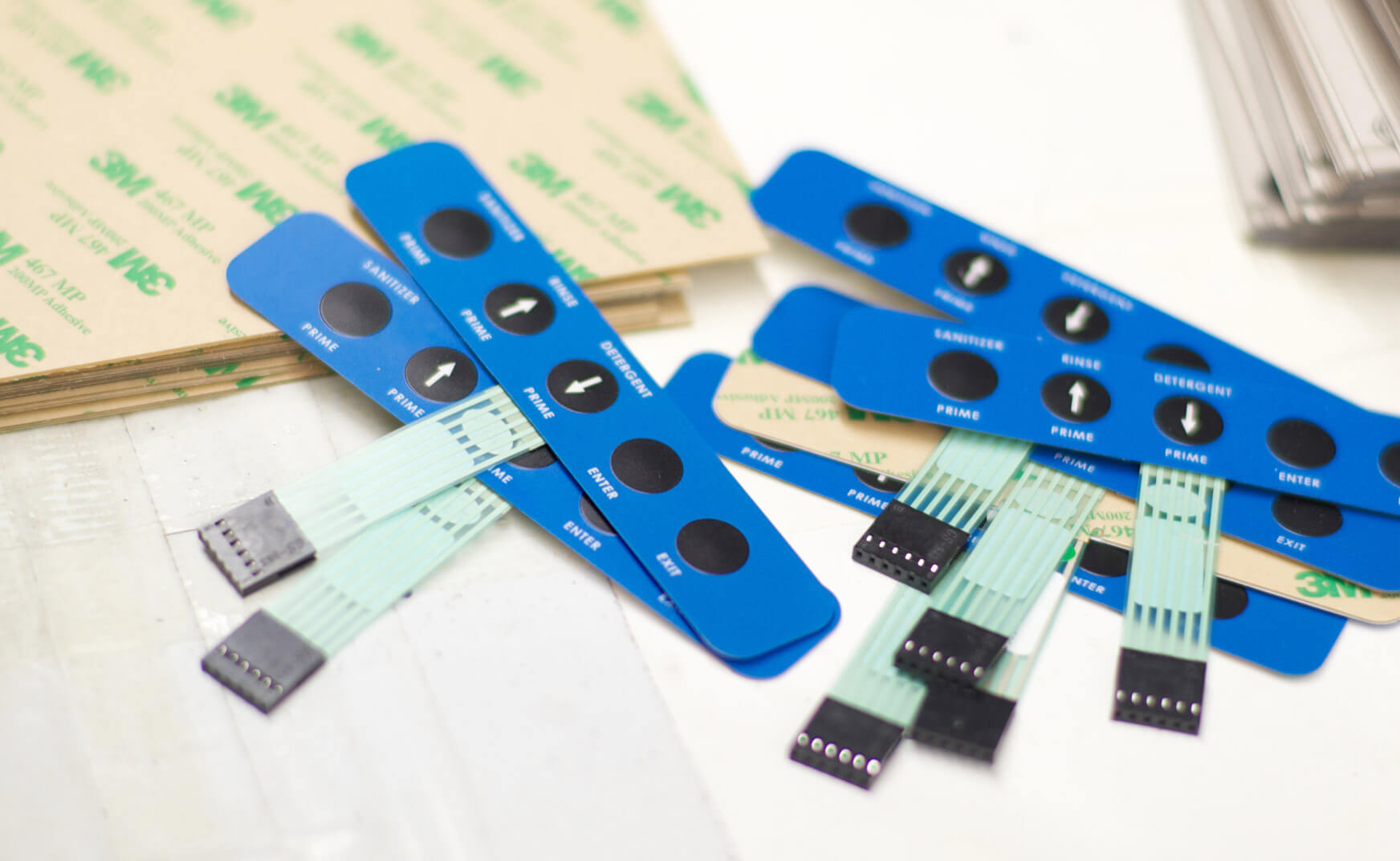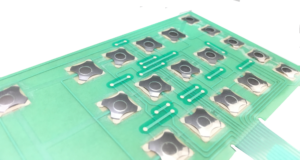Why Membrane Layer Switches Over Are Essential for Resilient Control Equipment
Membrane switches play a crucial role in making sure the resilience and integrity of control systems throughout numerous industries. Their unique building allows them to withstand difficult environmental elements such as moisture, temperature extremes, and physical wear. This resilience not just prolongs the life-span of the systems they offer however likewise minimizes upkeep needs. As we explore the multifaceted advantages of membrane switches, it becomes obvious that their relevance goes beyond plain functionality, influencing individual experience and operational efficiency. What further effects do these qualities hold for the future of control system style?
Introduction of Membrane Switches
Membrane layer buttons are versatile and dependable elements typically utilized in numerous electronic control systems. The visuals overlay supplies both functional and aesthetic style, while the spacer layer guarantees that the buttons are triggered just when pressed.
Membrane layer switches are typically preferred in applications calling for a compact and lightweight style, making them suitable for portable devices, clinical tools, and commercial machinery. They can be customized to fulfill particular individual needs and can include numerous functions such as backlighting, responsive comments, and numerous colors. Membrane layer switches are immune to dirt, dampness, and pollutants, making them suitable for environments where sturdiness is crucial.
Benefits of Sturdiness
In several applications, the longevity of membrane changes deals significant advantages that enhance their overall performance and integrity. These switches are developed to hold up against extreme environments, making them suitable for use sought after conditions such as high humidity, extreme temperatures, and direct exposure to chemicals. Their robust construction aids to protect against damages from physical influence, making certain lasting performance and lessening the requirement for frequent replacements.
In addition, membrane layer buttons are resistant to damage, which is critical in applications where regular interaction takes place. This resilience equates to decrease upkeep prices, as organizations benefit from lowered downtime and less service disruptions. The encapsulated layout of membrane layer switches protects interior parts from dust and wetness ingress, further adding to their lifespan (membrane switch).
An additional benefit is their capability to keep constant performance with time. With a high tolerance for mechanical stress, these switches maintain their tactile feedback and electrical stability, making certain customer satisfaction. Ultimately, the durability of membrane layer switches over not only improves operational effectiveness however additionally fosters confidence in their reliability, making them a favored selection for control systems across numerous industries.
Applications in Different Industries
Resilient control systems using membrane buttons locate comprehensive applications throughout a series of industries, each benefiting from the one-of-a-kind characteristics these buttons offer. In the clinical field, membrane switches are critical for gadgets such as person displays and analysis tools, where reliability and simplicity of cleansing are paramount. Their resistance to wetness and contaminants ensures they maintain performance in sterilized atmospheres.
The auto sector leverages membrane layer switches for control panel controls and infotainment systems, where they give smooth, low-profile user interfaces that enhance customer experience. These buttons are likewise created to endure have a peek here severe conditions, including exposure to extreme temperature levels and vibrations.
In industrial settings, membrane layer switches are commonly used in equipment control board, providing tactile feedback and durability necessary for high-usage applications. Their capability to resist chemicals makes them appropriate for making atmospheres where spills and impurities are constant.

Customer electronics, such as cooking area appliances and push-button controls, likewise utilize membrane buttons for their adaptability and cost-effectiveness. Generally, the adaptability and durable nature of membrane layer switches make them essential throughout different industries, making sure effective procedure and long life in control systems.
Design and Aesthetic Allure
While performance is paramount, the style and aesthetic charm of control systems equipped with membrane switches play a vital role in individual involvement and general experience (membrane switch). The aesthetic layout of these buttons can considerably influence customer understanding and interaction. A well-designed membrane button boosts the good looks of the device, making it much more attractive to individuals and cultivating a link between Bonuses the user and the product
Membrane switches offer a large amount of versatility in style, allowing manufacturers to tailor graphics, colors, and structures to line up with brand name identity and product appearances. Making use of dynamic colors and unique patterns can draw focus, while tactile comments can strengthen the individual's interaction with the tool. Furthermore, the ability to incorporate LED indicators and backlighting into the membrane button design offers both useful and visual benefits, boosting click for info presence and use in numerous atmospheres.

Enhancing User Experience

Additionally, membrane switches can be customized to integrate graphical interfaces, improving use by providing details in a clear and instinctive manner (membrane switch). This customization can include symbols, tags, and shade coding that overview users through facility capabilities with ease. Furthermore, their versatility permits integration in different atmospheres, ensuring regular efficiency whether in industrial equipment or customer electronics
The longevity of membrane layer buttons also plays a vital duty in customer experience. By withstanding harsh problems and extended use, these switches minimize the likelihood of system failures, therefore promoting dependability and customer self-confidence. Inevitably, the tactical use membrane changes not only raises performance but additionally considerably improves user communication with control systems, making them an essential component in modern-day layout.
Conclusion
